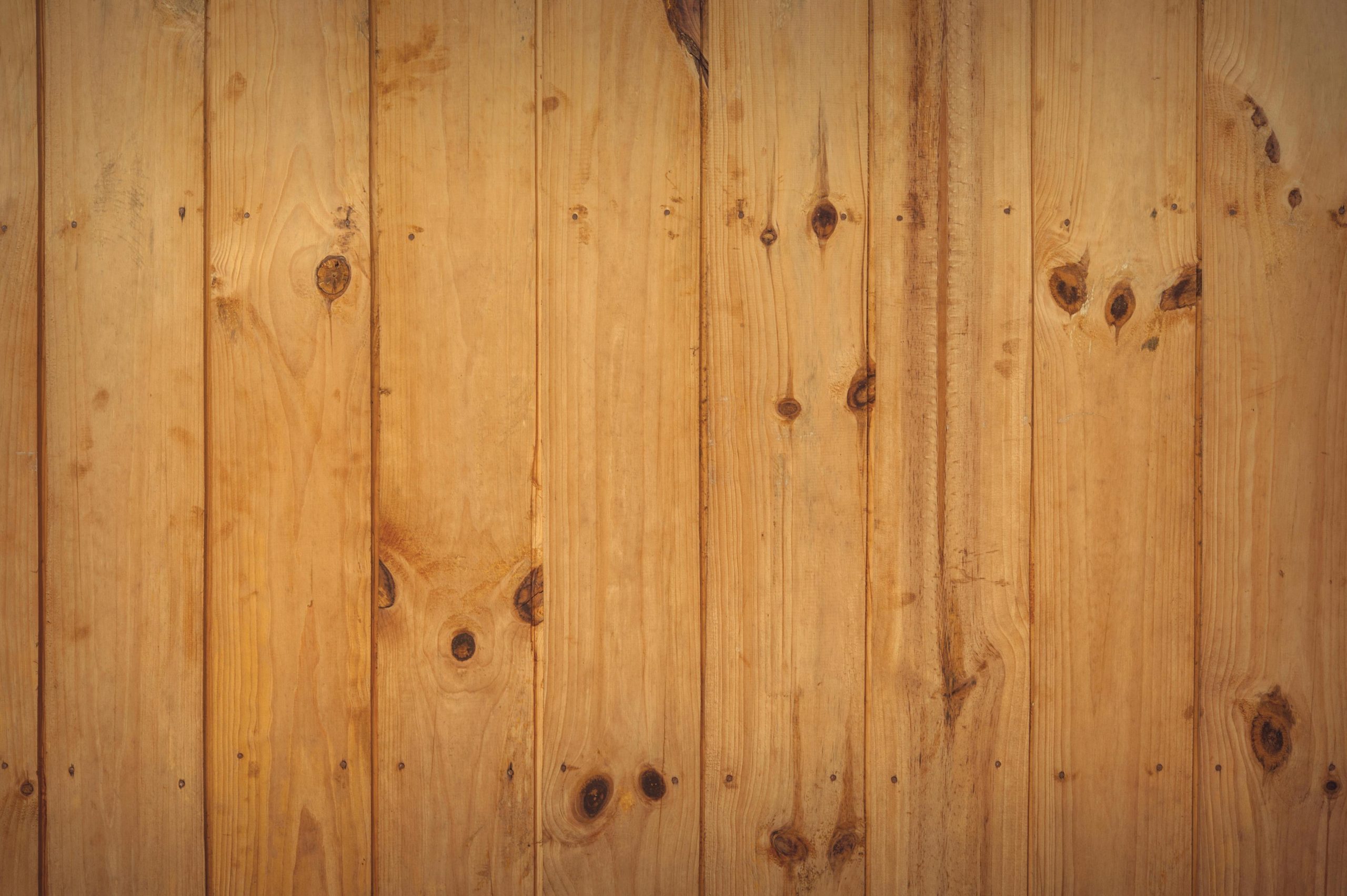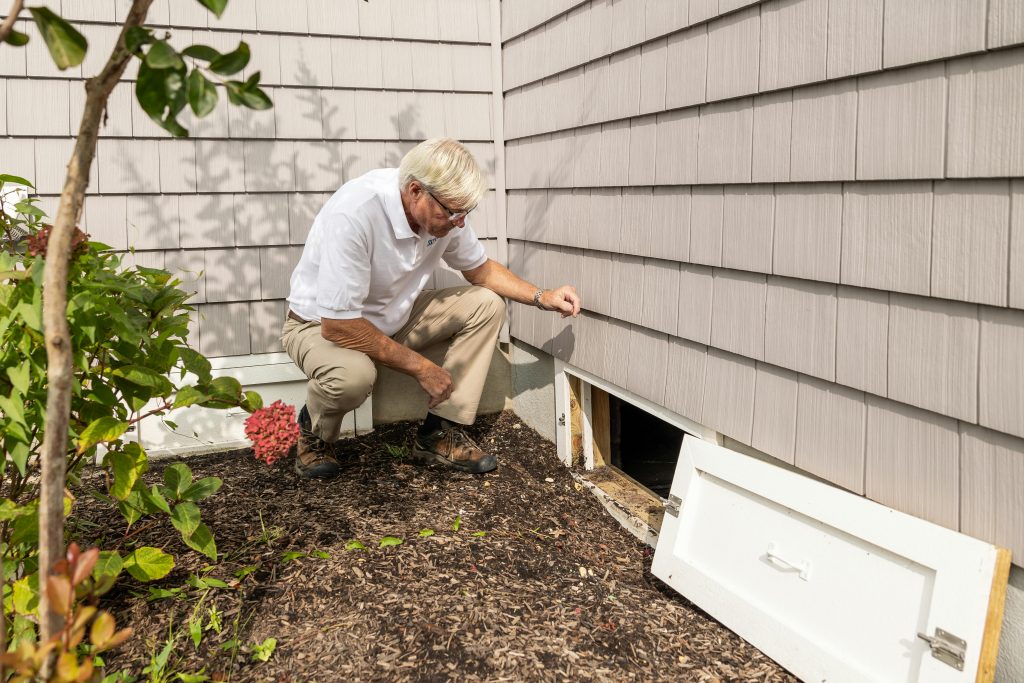- Crawl space insulation improves comfort, lowers energy bills, prevents moisture damage, and protects plumbing.
- A vapor barrier is essential for dirt-floor crawl spaces to block ground moisture before adding insulation.
- Rigid foam and spray foam provide the best long-term results, while fiberglass is a cheaper DIY option better suited to dry climates.
- Vented crawl spaces are best insulated at the ceiling (floor above), while unvented crawl spaces should be sealed and insulated at the walls.
- Costs vary widely—fiberglass averages $0.50–$2 per sq. ft., foam board $1.50–$3, and spray foam $2–$5.
- Avoid mistakes like skipping vapor barriers, leaving vents open, or using fiberglass in damp spaces to ensure durability and effectiveness.
If your home has a crawl space, you may be losing more energy and money than you think. Crawl spaces can make homes drafty, encourage mold growth, and even put plumbing at risk during cold weather. The good news is that proper insulation can fix all of these problems. Knowing how to insulate a crawl space isn’t just about comfort—it’s about protecting your investment and reducing long-term energy costs.
In this guide, we’ll walk through everything you need to know about crawl space insulation. You’ll learn why it matters, which materials work best, how much it costs, and the step-by-step methods you can use to do it right.
Why Does Crawl Space Insulation Matter?
Crawl spaces may be hidden under your home, but they have a big impact on indoor comfort and energy efficiency. Poor insulation allows heat to escape in the winter and hot air to seep in during the summer. This makes your HVAC system work harder and your energy bills climb higher.
Some of the top reasons to insulate a crawl space include:
- Energy efficiency – Prevents heating and cooling loss.
- Moisture control – Reduces condensation, mold, and wood rot.
- Improved indoor comfort – Keeps floors warmer in winter and cooler in summer.
- Pipe protection – Prevents frozen or burst pipes in cold climates.
- Home value – Proper insulation is a selling point for buyers.
Without insulation, your crawl space essentially acts as a giant vent funneling outside air into your home. That’s why insulation is one of the smartest upgrades a homeowner can make.
Should You Insulate a Crawl Space With a Dirt Floor?
Many homes have crawl spaces with dirt floors, which present unique challenges. Dirt floors allow moisture from the ground to rise, leading to humidity problems inside your home. If your crawl space has a dirt floor, insulation is only part of the solution—you’ll also need a vapor barrier to seal out ground moisture.
Steps for insulating a dirt-floor crawl space:
- Install a vapor barrier – Lay down thick plastic sheeting to seal the dirt.
- Seal air leaks – Use caulk or spray foam to close gaps around vents and rim joists.
- Add insulation – Choose rigid foam boards, spray foam, or batt insulation.
- Condition the space – In humid areas, a dehumidifier may be necessary.
Skipping the vapor barrier can make insulation less effective, so this step is critical.
What Are the Best Materials for Crawl Space Insulation?
When it comes to learning how to insulate a crawl space, one of the most important decisions is choosing the right material. The ideal insulation depends on your climate, crawl space type (vented or unvented), budget, and long-term maintenance goals. Each material has strengths and weaknesses, so knowing when and where to use them is key.
Fiberglass Batts
Fiberglass batts are one of the most common types of insulation, often used in vented crawl spaces. They come in pre-cut rolls or sheets that fit between floor joists.
Pros:
- Budget-friendly and widely available at home improvement stores.
- Easy for DIY installation—no special tools required.
- Provides decent thermal insulation (R-2.9 to R-3.8 per inch).
Cons:
- Highly vulnerable to moisture; it can trap water, sag, or grow mold.
- Attractive nesting material for pests like rodents.
- Loses effectiveness over time if it gets damp or compressed.
Best for: Dry climates with vented crawl spaces where cost savings matter most.
Rigid Foam Board (Polystyrene or Polyisocyanurate)
Rigid foam boards are dense panels that can be cut and attached directly to crawl space walls. They are popular for unvented, sealed crawl spaces.
Pros:
- High R-value per inch (R-3.6 to R-6.5) depending on the type.
- Excellent moisture resistance—won’t absorb water like fiberglass.
- Long lifespan and maintains performance over time.
- Easy to pair with a vapor barrier for full protection.
Cons:
- More expensive upfront than fiberglass.
- Requires precise cutting to fit snugly around pipes and wiring.
- Must be sealed at seams with spray foam or tape to prevent air leaks.
Best for: Most climates, especially humid or cold areas. Ideal for homeowners looking for a durable, long-term solution.
Spray Foam Insulation
Spray foam is applied as a liquid that expands into hard foam, filling cracks, gaps, and uneven surfaces. It comes in open-cell and closed-cell varieties.
Pros:
- Provides both air sealing and insulation in one application.
- Closed-cell spray foam has one of the highest R-values (R-6 to R-7 per inch).
- Excellent at blocking moisture and reducing mold risks.
- Works well in irregular or hard-to-reach crawl spaces.
Cons:
- Expensive compared to other insulation types.
- Usually requires professional installation.
- Can be difficult to remove or replace once installed.
Best for: Cold or humid climates, and crawl spaces with many air leaks or irregular layouts. Great for long-term performance and energy efficiency.
Mineral Wool (Rock Wool or Slag Wool)
Mineral wool is made from natural stone or recycled steel byproducts spun into fibers. It’s denser than fiberglass and more resistant to harsh conditions.
Pros:
- Naturally fire-resistant, offering added safety.
- Water-resistant—doesn’t absorb moisture like fiberglass.
- Provides excellent soundproofing.
- Higher R-value than fiberglass (R-3.7 to R-4.3 per inch).
Cons:
- Heavier and harder to install in tight crawl spaces.
- More expensive and less commonly stocked at hardware stores.
- Still requires a vapor barrier in damp environments.
Best for: Homeowners concerned with fire safety or noise reduction, or those who want a mid-tier option between fiberglass and rigid foam.
Reflective Foil Insulation
Reflective foil, also called radiant barrier insulation, is made of aluminum foil laminated to a backing material. It reflects radiant heat rather than trapping air like other insulations.
Pros:
- Effective in hot climates where radiant heat from the ground or surrounding soil is a problem.
- Lightweight, easy to install, and often combined with other insulation types.
- Can help lower cooling costs in summer.
Cons:
- Provides minimal R-value by itself—works best as a supplement.
- Not effective in cold climates where heat retention is the priority.
- Requires clean, dry surfaces for proper adhesion.
Best for: Hot, sunny climates where radiant heat control is important. Works well as an additional layer paired with foam insulation.
Which Crawl Space Insulation Is Best?
- Top performers: Rigid foam board and spray foam offer the best balance of durability, moisture resistance, and insulation value.
- Budget option: Fiberglass batts are the most affordable but should only be used in dry, vented crawl spaces.
- Specialty choice: Mineral wool adds fire and water resistance, while reflective foil is best for radiant heat control in warm regions.
In short, if you’re looking for the most effective, long-lasting insulation, rigid foam or spray foam is worth the higher cost. If you’re on a budget and in a dry climate, fiberglass can work—but be prepared for more maintenance.
Should You Insulate Crawl Space Walls or Ceiling?

A common question is whether to insulate the crawl space ceiling (the underside of your home’s floors) or the crawl space walls. The answer depends on whether your crawl space is vented or unvented.
- Vented crawl spaces: Insulate the ceiling (floor above). This keeps your home separate from the outdoor air.
- Unvented crawl spaces: Insulate the walls. This effectively brings the crawl space into your home’s thermal envelope.
If you live in a humid or cold climate, converting to an unvented, sealed crawl space with wall insulation and a vapor barrier is usually the best long-term solution.
How to Insulate a Crawl Space Step by Step
The process will vary depending on the material you choose, but here’s a general step-by-step breakdown for insulating crawl space walls with rigid foam or spray foam.
Step 1: Inspect the Crawl Space
Before you begin, it’s critical to assess the current condition of your crawl space. Insulating without addressing existing problems can lock in moisture or worsen damage.
- Check for water leaks or standing water. Persistent moisture issues should be fixed with proper drainage (such as a sump pump or French drain) before insulation is added.
- Look for mold, pests, or damaged wood. Mold remediation or pest control may be necessary. Insulating over active problems just hides them.
- Fix foundation cracks. Small cracks can be sealed with hydraulic cement, while larger structural issues may need professional repair.
- Assess headroom and accessibility. Tight spaces may affect your choice of material (spray foam is easier in cramped areas, while rigid foam suits open walls).
Step 2: Air Seal the Space
Air leaks undermine insulation performance and let in moisture-laden air. Before adding insulation, seal it up tight.
- Seal gaps around vents, pipes, and rim joists using spray foam or silicone caulk. Rim joists are common leak points where outside air enters.
- Close and seal foundation vents. In most modern approaches, vented crawl spaces are converted into sealed, conditioned spaces.
- Check the crawl space access door. Add weatherstripping or a gasket to ensure an airtight fit.
Tip: A smoke pencil or even a stick of incense can help you spot drafts in the crawl space.
Step 3: Install a Vapor Barrier
Moisture control is one of the most important steps when insulating a crawl space. Without a vapor barrier, your insulation could fail prematurely.
- Choose the right thickness. Use 6-mil or thicker polyethylene sheeting for durability. Thicker barriers (10–20 mil) are better for high-moisture areas.
- Roll out the barrier across the entire crawl space floor. Start at one end and work your way across to minimize seams.
- Overlap seams by at least 12 inches and tape them securely with vapor barrier tape (not duct tape).
- Seal the barrier to the walls and piers. Extend the sheeting a few inches up the foundation walls and fasten with construction adhesive or mechanical fasteners.
Optional upgrade: For long-term protection, consider encapsulation, which fully seals walls and floors with reinforced vapor barriers.
Step 4: Add Insulation
Now that your crawl space is clean, dry, and sealed, it’s time to insulate. Your choice of material will determine the installation method.
- Rigid Foam Boards (best for walls):
- Cut boards to size with a utility knife.
- Attach directly to foundation walls using adhesive or masonry fasteners.
- Stagger seams to minimize air leakage.
- Seal seams with foil tape or spray foam for a continuous thermal barrier.
- Spray Foam (best for irregular areas):
- Apply directly to foundation walls and rim joists.
- Ensure even coverage at the recommended thickness (usually 2–3 inches for closed-cell spray foam).
- Wear proper protective equipment; spray foam should typically be applied by a professional for safety and effectiveness.
- Fiberglass Batts (only for vented crawl spaces):
- Place snugly between floor joists above the crawl space.
- Use wire supports or insulation hangers to prevent sagging.
- Never install fiberglass directly against the crawl space ground—it must be above a vapor barrier.
Step 5: Condition the Space
Even after insulation, crawl spaces need proper conditioning to prevent future moisture and air quality issues.
- In humid climates:
- Install a crawl space dehumidifier to regulate moisture levels.
- Ensure proper drainage is maintained outside the home.
- In cold climates:
- Wrap exposed pipes with foam sleeves or heat tape.
- Keep pipes within the insulated envelope of the crawl space to prevent freezing.
- For whole-home efficiency:
- Some homeowners connect the crawl space to their HVAC system, which helps circulate conditioned air and keeps humidity in check.
How Much Does Crawl Space Insulation Cost?
Costs depend on the material, labor, and crawl space size. On average:
- Fiberglass batts: $0.50 – $2 per square foot
- Rigid foam board: $1.50 – $3 per square foot
- Spray foam insulation: $2 – $5 per square foot
For a 1,000-square-foot crawl space:
- Fiberglass = $500 – $2,000
- Rigid foam = $1,500 – $3,000
- Spray foam = $2,000 – $5,000
DIY installation can save money, especially with fiberglass or foam board, but professional installation ensures better sealing and long-term results.
What Are the Signs Your Crawl Space Needs Insulation?

Not sure if your crawl space needs attention? Look for these red flags:
- Floors feel cold in the winter.
- Rising energy bills without explanation.
- Musty odors coming from under the house.
- Mold or condensation on crawl space walls.
- Frozen pipes during cold weather.
- Visible gaps, sagging insulation, or damp fiberglass.
If you notice any of these issues, it’s time to learn how to insulate a crawl space properly.
Should You DIY or Hire a Professional?
Insulating a crawl space can be a manageable DIY project if you’re comfortable working in tight spaces and handling insulation materials. Fiberglass and foam board are relatively beginner-friendly. Spray foam, however, often requires specialized equipment and professional expertise.
DIY is best if:
- Your crawl space is dry, clean, and easy to access.
- You’re using fiberglass batts or foam board.
- You’re confident about sealing air leaks yourself.
Hire a pro if:
- Your crawl space has existing moisture or mold problems.
- You want to use spray foam insulation.
- Your crawl space is cramped or difficult to navigate.
In many cases, a hybrid approach works—DIY the vapor barrier and air sealing, then hire professionals for insulation.
How Does Climate Affect Crawl Space Insulation?
Your location plays a major role in deciding how to insulate a crawl space.
- Cold climates: Prioritize wall insulation, sealing vents, and protecting pipes. Spray foam or rigid foam is ideal.
- Hot, humid climates: Vapor barriers and dehumidifiers are critical to prevent mold. Reflective foil may help reduce radiant heat.
- Mixed climates: Use rigid foam for consistent results and ensure proper air sealing year-round.
Mistakes to Avoid When Insulating a Crawl Space
Even the best materials won’t perform well if installation is flawed. Here are common mistakes to avoid:
- Skipping the vapor barrier on dirt floors.
- Using fiberglass in a damp or unsealed crawl space.
- Failing to seal rim joists and gaps before insulating.
- Leaving vents open in humid or cold climates.
- Not addressing drainage issues before insulating.
Each of these mistakes can lead to wasted money, reduced energy savings, and ongoing crawl space problems.
Long-Term Maintenance of a Crawl Space
Once insulated, a crawl space isn’t a “set it and forget it” space. Regular checks ensure your investment lasts.
Maintenance checklist:
- Inspect vapor barriers yearly for rips or gaps.
- Check for water leaks after heavy rain.
- Look for signs of pests or mold.
- Replace or repair damaged insulation as needed.
- Monitor humidity levels, especially in summer.
By staying proactive, you’ll extend the lifespan of your insulation and keep your home efficient.
In Summary
Crawl space insulation is one of the most overlooked yet most valuable upgrades for a home. Done correctly, it boosts comfort, lowers utility bills, protects plumbing, and even increases resale value.
The best method depends on your climate, budget, and crawl space type. Fiberglass works for budget DIYers, but rigid foam or spray foam offers the best long-term protection. No matter which material you choose, don’t skip air sealing and vapor barriers—these are the foundation of a healthy crawl space.
Learning how to insulate a crawl space is an investment in your home’s future. With the right approach, you’ll enjoy lower energy costs, better comfort, and peace of mind knowing your home is protected from the ground up.

